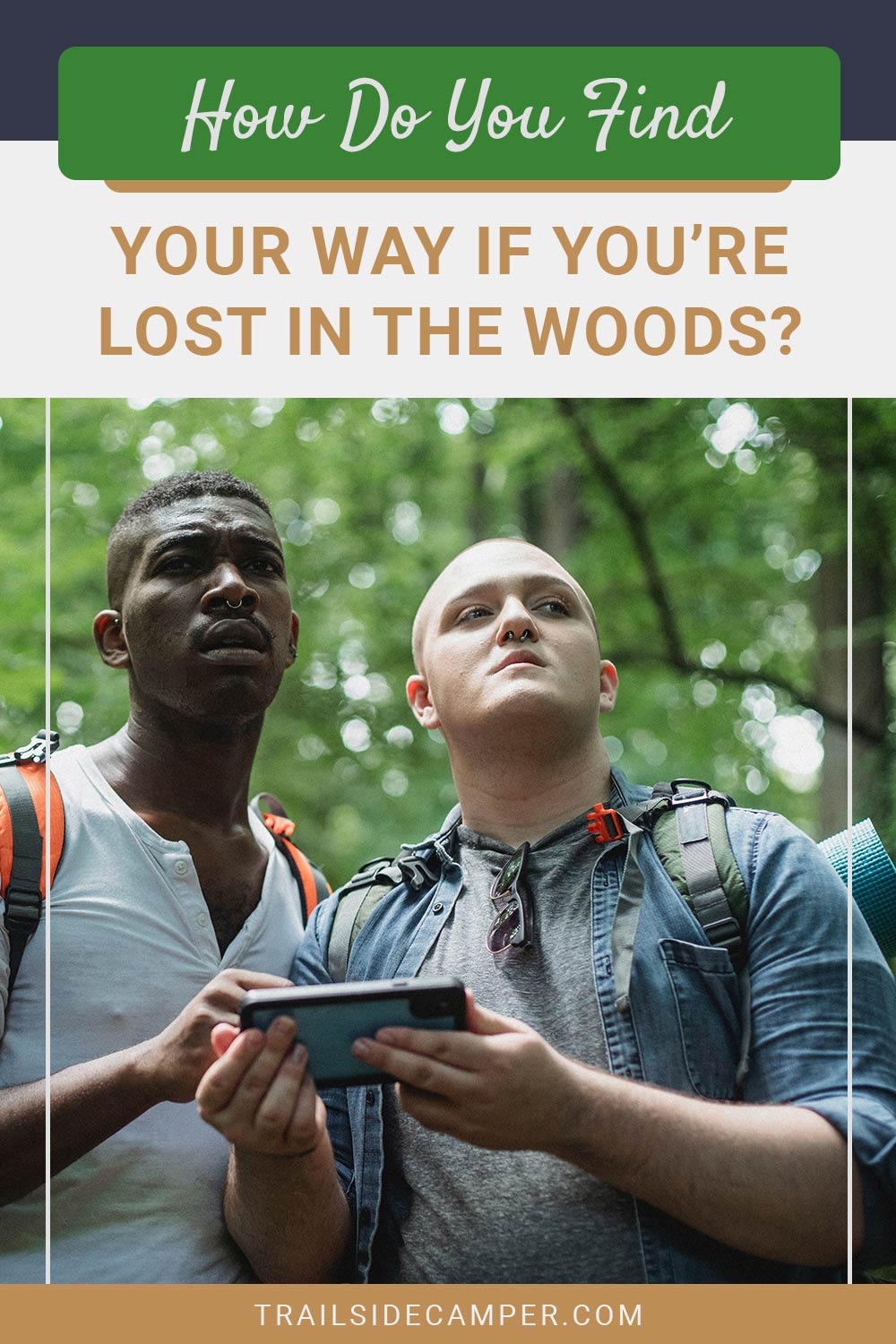Have you ever been lost in the woods and feared for your safety? It’s a daunting feeling knowing that no one is around to help if something goes wrong.
Fortunately, there are some steps you can take to ensure that you find your way out safely, no matter where the adventure takes you.
In this blog post, we’ll provide some valuable tips on how to navigate if you get lost while camping- so that even if things don’t go as planned, your skills will have prepared you for the worst-case scenario!
What Should You Do if You’re Lost in the Woods?
It can be a disorienting experience to find yourself lost in the woods. If that happens, don’t waste your time trying to wander your way out: chances are slim with limited visibility and frequent intertwining of trails and paths.
You will just find your way without help. Instead, pre-plan: know where you are going and make sure you tell somebody before you embark on your journey.
Plan for what-ifs, carry a communication tool (i.e., cell phone), and be sure to have plenty of drinking water with you – dehydration is not something you want to experience while lost in the woods.
How Can You Find Direction?
If you find yourself at a loss in the woods, orienting yourself can be one of the biggest challenges. Fortunately, you can use methods that don’t require orienting in cardinal directions.
One way is to utilize a topographical map. Using recognizable landmass shapes and other geographical features, these maps enable you to orient yourself safely and effectively.
Alternatively, if you’re fortunate enough to have a compass or other device that uses GPS tracking and orientation, you should be able to find your way without too much trouble.
However, if all else fails and you can’t orient based on natural features or devices, look up!
Following the sun’s movements throughout the day can help orient yourself relative to a specific direction (east/west), from which you will be able to determine your location more accurately.
Why Do People Go in Circles When Lost?
When people are lost, they often go in circles without realizing it. This phenomenon occurs due to the stress of being lost, which causes the person to act instinctively and not think clearly.
Going in circles is a common behavior for both humans and animals when attempting to find their way through unfamiliar terrain.
It’s almost as if they intuitively believe that if they keep doing what they’re doing, something will eventually change or come up that leads them to where they need to go.
Although this rarely works, going in circles gives them a sense of control and helplessness simultaneously – it’s better than feeling completely disoriented by their surroundings.
Which Gadgets Are You Supposed to Have to Avoid Being Lost?
Smartphones have revolutionized the way we get around and find our way, making handy gadgets an essential tool for those trying to avoid being lost. Map apps and GPS tracking tools are commonplace nowadays and make it easy to understand a given area.
However, it’s important to remember that these technological advancements are no substitute for a good understanding of your own area or the place you’re headed – nothing beats preparation, especially when traveling further abroad in unfamiliar lands.
Walking around with the latest phone and full of handy gadgets might alleviate some worries, but ultimately one should never forget the importance of research and preparation to ensure a successful journey wherever you go.
Common Mistakes You Need to Avoid
Hiking can be an amazing experience, but it can also quickly become a nightmare if you’re not careful. To make sure you don’t get lost when hiking, there are some common mistakes that you need to avoid.
First and foremost, don’t rely too heavily on technology. It’s always a good idea to take along a paper map or guidebook so that you can still find your way even if tech fails. Secondly, stay aware of your surroundings.
Take plenty of breaks to look around and truly assess the terrain – this might help alert you to subtle changes in the path before they get out of hand.
Finally, make sure someone knows where you’re going and when you plan on returning home, just in case something does go wrong. By following these simple steps, your time spent hiking should be safe and enjoyable for years to come!
Final Thoughts on How Do You Find Your Way if You’re Lost in the Woods
Always remember to be prepared if you are venturing out into nature and be familiar with the area that you are in. It’s important to understand your surroundings, bring the right equipment, and use it correctly in case of an emergency.
If you ever find yourself lost in the woods, stay calm and remain still unless necessary so you can listen for clues or potential rescuers. When searching for a way out of the woods, look for signs of civilization by checking nearby trails or roads outside the forest.
Feeling desperate? Utilize any items around you, like sticks, fabric articles, leaves, etc., to create a makeshift shelter if needed and make yourself visible.
Use what is available in nature to help get back on track but always use caution when taking steps towards survival and never overlook emergency signals that could save your life in preventable situations. Be safe and have a plan before jumping into any outdoor excursions!

